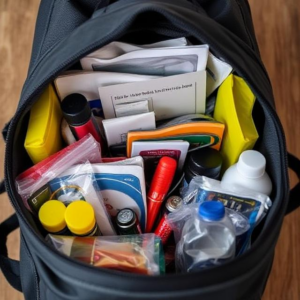When disaster strikes, having a reliable house home evacuation plan can mean the difference between chaos and safety. Take the recent Eaton fire in Los Angeles as a chilling example—electrical issues led to raging fires that destroyed homes and put lives at risk. Families were left frantically trying to escape as flames spread rapidly, and for many, vital seconds were lost in the confusion. To protect your loved ones and ensure a clear, coordinated response in such situations, it’s essential to create and practice an evacuation plan tailored to your specific home.
Why Is a House Home Evacuation Plan Important?
Emergencies leave little room for decision making. When panic sets in, confusion can cause delays that put lives at risk. A house home evacuation plan eliminates guesswork by laying out clear steps for everyone to follow. Definitely, having a plan that considers the special needs of each member of a family will benefit families with children, elderly members, or pets. An evacuation plan will help families to improve on their response time, building commitment and reducing panic at stressful times.
Steps to Create a Simple and Effective Evacuation Plan
1. Assess Your Home Layout
As a first step, carefully assess the design of your home and trace all possible escape routes. Walk around your house to locate the primary escape path for each room. Consider windows, back doors, and even unconventional exits that may serve the purpose of escaping when the situation demands it. Don’t forget to ensure that all escape points are easy to access and unobstructed—this might involve moving furniture or clearing clutter around pathways.
Decide on an outdoor location people will gather after they have evacuated from the house. This might be the driveway of a neighbor, the mailbox, or an area across the street.
2. Assign Roles and Responsibilities
Every family member must know their own role in their evacuation plan. An adult will take the emergency kit, while the older child will escort the younger child to safety outside. If you have pets, assign someone to safely secure their escape. Clear roles speed up the process and give everyone a sense of purpose during high-stress moments.
3. Create a Written or Visual Plan
Describe the steps to be taken during an evacuation and include a floor plan showing exits per room. Simple drawings or diagrams can be particularly useful for small children or for family members who respond better to visual guidance. Post a copy of the plan in a common area, like a refrigerator, where it is easily viewed and referred to by all.
4. Assemble an Emergency Kit

An evacuation kit is a vital companion to your house home evacuation plan. Prepare a backpack or container that contains essentials like:
Flashlights and batteries
- A first-aid kit
- Bottled water and non-perishable snacks
- Copies of important documents
- Medications
- Emergency contact information
Place the kit near an exit, where it’s quick to grab as you evacuate.
5. Plan for Special Needs
Modify things for special family members, such as a staircase-free route if your family member is on a wheelchair. Alternative arrangements, such as a travel crib or baby carrier, should also be made in case there are infants or toddlers in the household. Have carriers or leashes for pets that can be accessed easily.
6. Test Your Smoke Alarms and Additional Safety Tools
Good safety equipment allows quick escape. Always check that smoke alarms are in working order once a month, and change the batteries when needed. Think about installing fire extinguishers and carbon monoxide detectors. These tools can give you advanced warning, cutting down crucial seconds during an emergency.
How to Practice Your Evacuation Plan
Creating a house home evacuation plan is just the first step—practicing it is what brings it to life. Regular practice makes a second nature and brings out any possible necessity for change. Here are few proven techniques to practice effectively:
- Schedule Routine Drills
As a family, every three to four months, time should be set aside for the evacuation drill. The more a procedure is repeated, the greater the confidence in it, and the more the family members will be aware of their roles. - Test Different Scenarios
Prepare yourself and your family in how to react in the event of an emergency in your home, such as fire, storm, or temp power cut. Practice escaping both during daylight and at night when visibility might be limited. - Focus on Speed and Accuracy
It is important to time your drills to help you figure out any potential delays or hiccups in your plans. Practice run and then discuss how to improve efficiency in that aspect. - Evaluate and Update
Life circumstances change, and plans should adapt accordingly. Review and update your evacuation plan any time you rearrange furniture, move to a new house, or welcome new family members like pets or babies.
A Plan to Keep Your Family Safe
Your family deserves to feel secure and prepared at home, no matter what challenges may arise. By creating and practicing a house home evacuation plan, you empower your loved ones to handle emergencies calmly and effectively. Take a few hours today to conceptualize and put into planning. This could be your only chance to protect what matters tomorrow. Have a go at formulating your plan-and make safety a family priority!
Previous